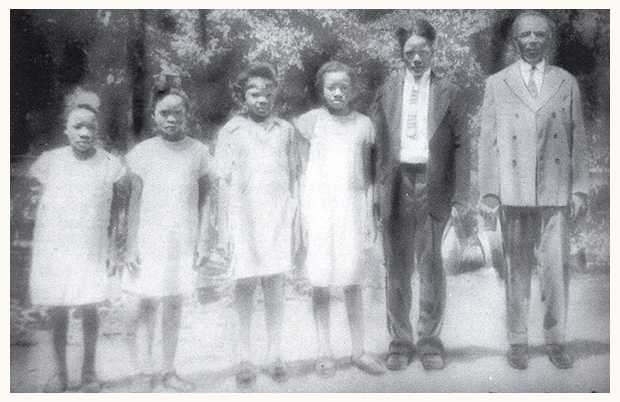
Hobcaw House

 The Kennedy Family's Home
The Kennedy Family's Home
Bernard Baruch built a house for William and Daisy Kennedy and their six children on this spot, so that they would be close to Hobcaw House when he needed them. Pictured here, from left to right, are Ida, Minnie, Frances, Dorothy, Edwin and William. Not in the photograph are Daisy and daughter Nettie.

Although the Baruchs didn't have a telephone at Hobcaw House, they had a phone line running to the Kennedys' home. In this video, Minnie Kennedy remembers what it was like when Baruch called.
 The Hobcaw Gate
The Hobcaw Gate
The road leading to Hobcaw House was used mainly as a service drive in the days before the bridge connecting Georgetown and the Waccamaw Neck, when most guests were transported to the landing in front of the house by the Baruch yacht.
After the completion of the bridge, more visitors drove to Hobcaw, and many rich and famous people passed through this entrance. The masonry columns were added around 1940, using old brick similar to that at Bellefield House, which was landscaped around the same time. The metal gate with the word "Hobcaw" is a more recent addition.
The Kennedy family lived just outside the Hobcaw House complex, and when guests arrived, the children ran to welcome them, as Minnie Kennedy recalls in this video clip, recorded by SCETV in 2011.
 Hobcaw House Outbuildings
Hobcaw House Outbuildings
When Bernard Baruch bought Hobcaw Barony, it included a Victorian house built around 1890 by the Donaldson family on a high bluff overlooking Winyah Bay. That house, affectionately referred to as the "Old Relick" by the Baruchs, burned in 1929, and Baruch replaced it with Hobcaw House. Built of brick from the Guignard Brick Company of Columbia, S.C., Hobcaw House occupies the same site as the Donaldson house.
Outbuildings dot the landscape surrounding the house, as they did in the Old Relick's day. Today they include a kennel and dogfood stove, a chicken house and a laundry, none of which serve their original functions. A storage shed is visible to the left of the gate. In this 1905 photograph of the Donaldson house, outbuildings can be seen on the right. They may be slave cabins, sheds, or the overseer's house.

 Minnie's World
Minnie's World
Minnie Kennedy drew Minnie’s World in 1999 when she was 83 years old. Kennedy was born at Hobcaw Barony, to parents descended from slaves, but she left when she was in her twenties and didn’t move back to the Waccamaw Neck until 1988. In the decades-long interim she had many experiences outside South Carolina – a career in education, civil rights activism, travels across the globe – yet Hobcaw Barony remained “Minnie’s World.”
Her hand-drawn map reflects an intimate connection to her birthplace, an abiding knowledge of the structures of Hobcaw and their inhabitants, the roads, pathways and woodpiles, even the location of the “community pump.”

This is a world of African Americans who live in houses identified by family names. Unlike Rockwell Kent’s Chart of Hobcaw Barony, in which blacks are abstractly represented by an outsized mammy figure surrounded by small children, in Minnie’s World we see precisely where each family lives and who their neighbors are.
Separated by a fence and a horse meadow from “The Big House” on “The Hill,” these are the workers who maintain the barony and serve the Baruchs and their guests. Both the Kent and Kennedy maps characterize Hobcaw Barony, its environment and its residents, but from distinctly different perspectives.


 View Map
View Map